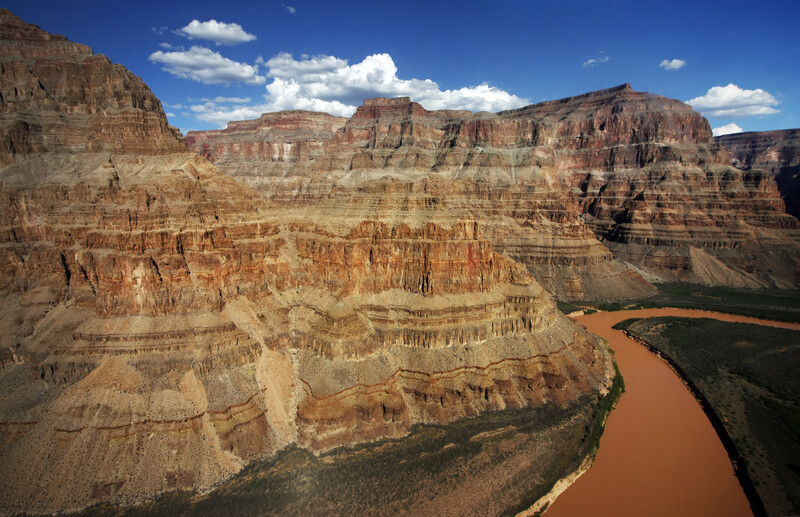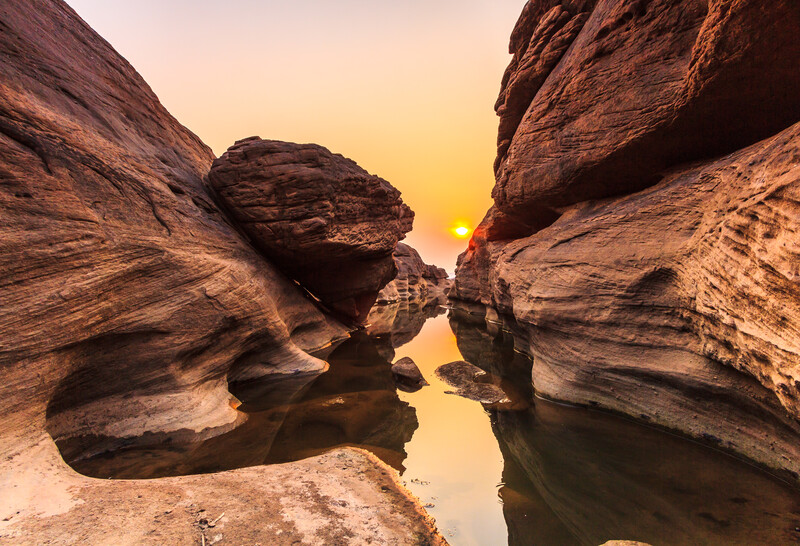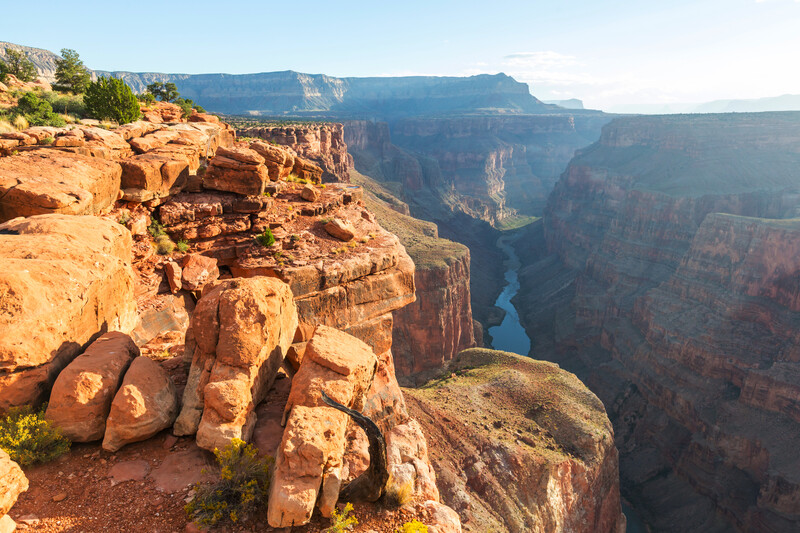
Geology has never been a compelling subject in my world. I would just as soon leave it to those who find it fascinating – like my niece Jamie who is a geologist. But I have to say that the Grand Canyon is a very unusual, actually singular, place when it comes to geology. The rock layers are found in chronological order, the youngest on top with evidence of past marine life, and the oldest, Vishnu schist, on the bottom with no evidence of life in it. Every kind of formation you can imagine can be found there: mesas, buttes, temples, platforms, castles, terraces, massive walls, amphitheatres, canyons, ridges…
As the Colorado River cut down through the earth it exposed layer after layer of deposited soil and rock. Because the layers were of different kinds of rock, they are different colors, different hardness and different levels of stability. The scenes in the canyon are like looking at a record of time, laid open on the walls of the canyons. The layers match on both sides of the river which proves that it was the process of erosion over time that caused the chasm. The plateaus on either side of the river were once continuous.
Science estimates it has taken 1.2 billion years to erode through all those layers and countless numbers of people, scientists, geologists have been left speechless looking at the grand scale of it all.
That’s all for L. Short and sweet, but lots of pictures.





Photos from canstockphoto.com

FANTASTIC pictures!
Isn’t it amazing what water can do over time?
And we have no concept of what that long a time is like. Thanks for reading and commenting Liz. Enjoy the A to Z!
Absolutely fabulous! If only is wasn’t so far away.
The Queen of all Mermaids
Really, as long as you post pictures of the Grand Canyon, you can’t go wrong!
Spectacular stuff…
Happy A-Z’ing
Haha, guess that’s right. Happy A to Z to you as well.
Yes, I was amazed at my niece who spent quite a few years climbing around in California mountains with “the guys” doing whatever geologists do… getting paid to hike I guess.
Stunning photos that eloquently demonstrate the geologic point.
Beth
https://bethlapinsatozblog.wordpress.com/
Great pictures!
I hope the ones I take will be as good.
Fabulous sights. Amazing how nature and time can sculpt incredible beauty. Great post.
There’s an image from space that is incredible.